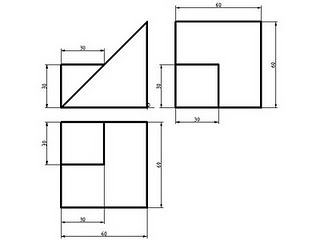El grafeno es una alotropía del carbono; la cual consiste en un teselado hexagonal plano (como un panal de abeja) formado por átomos de carbono y enlaces covalentes que se formarían a partir de la superposición de los híbridos sp2 de los carbonos enlazados.
¿Cuáles son sus principales características?
Entre las propiedades más destacadas de este material se incluyen:
Algunos científicos de la Universidad de Ilinois en Míchigan aseguran
que el grafeno tiene propiedades de autoenfriamiento.
Alta conductividad térmica y eléctrica.
Alta elasticidad y dureza.
Resistencia (200 veces mayor que la del acero).
El grafeno puede reaccionar químicamente con otras sustancias para
formar compuestos con diferentes propiedades, lo que dota a este
material de gran potencial de desarrollo.
Soporta la radiación ionizante.
Es muy ligero, como la fibra de carbono, pero más flexible.
Menor efecto Joule; se calienta menos al conducir los electrones.
Consume menos electricidad para una misma tarea que el silicio.
Genera electricidad al ser alcanzado por la luz.
Otras propiedades interesantes desde el punto de vista teórico son las
siguientes:
Los electrones que se trasladan sobre el grafeno se comportan como
cuasipartículas sin masa. Son los llamados fermiones de Dirac. Dichos
fermiones se mueven a una velocidad constante independientemente de su
energía (como ocurre con la luz), en este caso a unos 106 m/s. La
importancia del grafeno, en este aspecto, consiste en estudiar
experimentalmente este comportamiento que había sido predicho
teóricamente hace más de 50 años.
El grafeno presenta un efecto llamado efecto Hall cuántico, por el cual
la conductividad perpendicular a la corriente toma valores discretos, o
cuantizados, permitiendo esto medirla con una precisión increíble. La
cuantización implica que la conductividad del grafeno nunca puede ser
cero (su valor mínimo depende de la constante de Planck y la carga del
electrón).
Debido a las propiedades anteriores, los electrones del grafeno pueden
moverse libremente por toda la lámina y no quedarse aislados en zonas de
las que no pueden salir (efecto llamado localización de Anderson, y que
es un problema para sistemas bidimensionales con impurezas).
Es casi completamente transparente y tan denso que ni siquiera el átomo
de helio, cuyos átomos son los más pequeños que existen (sin combinar en
estado gaseoso) podrian atravesarlo.
Aún no dejando pasar el helio, sí deja pasar el agua, que estando en un
recipiente de grafeno cerrado, se evapora prácticamente a la misma
velocidad que si estuviese abierto.
¿Qué aplicaciones se te ocurren?
Un ordenador, un móvil, una cámara de fotos, un procesador de fotografías, cuadros...
alex y sus tecnos
sábado, 21 de abril de 2012
lunes, 23 de enero de 2012
Activities about Marco Polo
-Who was Marco Polo?
It was a Venetian merchant travelers of the Republic of Venice whose travels were recorded in Il Milione, a book that did much to introduce Europe to Central Asia and China. He learned the trade while his father and uncle, Niccolo and Maffeo, traveled to Asia and met Kublai Khan apparently. In 1269, they returned to Venice to meet with Mark for the first time.The three embark on an epic journey to Asia, returning after 24 years to find Venice at war with Genoa, Marco was imprisoned, and dictated his stories to a cellmate. He was released in 1299, became a wealthy merchant, married and had three children. He died in 1324, and was buried in San Lorenzo.
-What historical period is the text?
The historical period is in the Middle Ages
- What do you know about this period?
One class period was divided and at this time people discovered many things about science and the new way to get comfortable, as well as different types of heating systems. For example: coal. After coal, using wood to keep warm.
-What does the text area to discuss?
The region was Cathay.
- What is it called today?
Cathay is the Anglicized version of "Cathay" and an alternate name for China in English.
-Compare the development of this technology with the West during this period.
The Middle Ages coincided with the Islamic Golden Age. In this period there were many inventions and at that time, Islamic philosophy, science and technology were more advanced than in Western Europe. The period saw major technological advances, including the invention of cannon, spectacles, and artesian wells, and cross-cultural introduction of gunpowder, silk, the compass and the astrolabe from the east, so that in the Middle Ages in eastern Europe are more technological development in the western part.
-Why do you think the book was given this title?
In my opinion, the book "Book of Wonders" was given this title because inside of this, you can find stories about new sources for energy production in the period the author of the book was wonderful and fantastic, because it was the beginning of the uses of energy so that was not well known and that people feel surprised.
-What stones do you think the text is talking about?
I think the text speaks of coal, because it says something about the black stones found in nature and is highly flammable.
-What are the advantages and rock properties in the text?
The properties and advantages are that these stones are extracted from the mountains, and shining, so that the flames as the firewood: completely consumed like coal. They maintain a fire and produce heat for cooking better than wood. And if you make a fire at night and ensure such catches, will stay on all night, right until the morning.
lunes, 21 de noviembre de 2011
martes, 8 de noviembre de 2011
miércoles, 2 de noviembre de 2011
lunes, 24 de octubre de 2011
Suscribirse a:
Comentarios (Atom)




